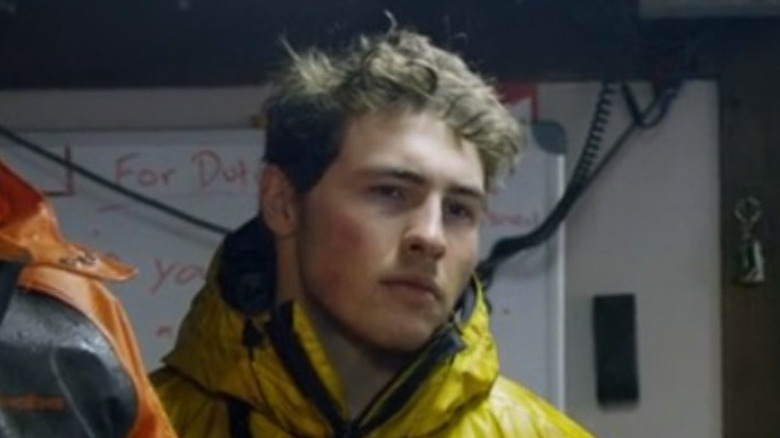Lady Alaska's James Gallagher Explains Who Gets A Full Share On Deadliest Catch
With crab fishing being recognized as one of the toughest and most dangerous jobs you could have, many viewers wonder if the money really makes it worth it. "Deadliest Catch" has opened our eyes to not only the difficulties involved in the job but how often sad moments can occur, which have tragically included the deaths of multiple crewmembers. While the idea of bringing home five or six figures for a couple of months of work is appealing to almost everyone, if the cost of it may be your life, does reward still justify the risks?
In an interview with People in 2016, Gary and Kenny Ripka revealed there are years they've made up to $170,000 a year and that deckhands can make up to $50,000 during the two months of crab season. "My guys this year, I think for the six weeks...[they] probably made $30 [thousand]," Gary said. According to the salary comparison site Comparably, "the salaries of Alaskan King Crab Fishermen in Anchorage, AK range from $12,155 to $321,199, with a median salary of $58,273. The middle 57% of Alaskan King Crab Fishermen makes between $57,020 and $142,499, with the top 86% making $314,285."
While this may sound amazing to some, there's a catch to how much can be made, and it's called the crew share amount.
Crab fisherman get paid a percentage amount of what the boat catches
According to the Alaska Department of Labor, "Wages are often based on a share or percentage of harvest earnings. Newcomer deckhand earnings range from 1.5% to 10% of the adjusted gross catch, depending on location and type of fishery and the skills the worker possesses. Some vessels offer a daily rate from $50 to $100 instead of a percentage of the catch." On top of this, crewmembers should expect to pay $200 to $500 before they even get on the boat, as they are expected to buy their commercial fishing license, as well as essentials like a sleeping bag, gloves, wet weather gear, rubber boots, as well as wrist covers and sleeves.
In a Reddit AMA, James Gallagher of the Lady Alaska confirmed that many vessels utilize crew shares, but "its up to the captain who receives a 'full share.'" Gallagher went on the explain that when he was new on the "Seabrooke," he "ran every position on deck, (stackman, rail, hydros etc.) and I was the only guy who would do so every day ... and I STILL wasn't full share." Crew members also pay a portion of the food, fuel, bait, and ice, with Gallagher acknowledging that they may be charged if they lose any gear.
Crab fishing may bring in a lot of money quickly, but with the salary range so broad and a lot required before stepping on a boat, it's definitely a career for those that are well-prepared for the challenging work ahead of them.

